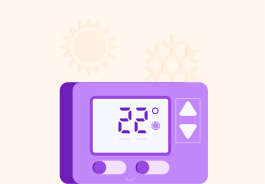YOU ARE LEARNING:
Homeostatic Regulation

Homeostatic Regulation
The body has a control system driven by a feedback mechanism that allows it to respond to changes in its environment.
What feedback system do you think homeostasis relies on?

How do you think homeostasis maintains a stable internal environment? The body detects ...

Homeostasis works through negative feedback. When changes are detected - something increases or decreases - the body sends "feedback" to the control centre in the brain. The brain initiates nervous or hormonal changes to bring conditions back to normal. If a condition increased, it will be brought back down. If a condition decreased, it will be brought back up.
What do you think a homeostatic mechanism needs to function properly?

This is an example of homeostasis
There is a stimulus, which is that the body is too hot. This gets picked up by nerve cells (receptors) in the skin and brain. The temperature regulatory centre (control) in the brain decides to do something about it. Sweat glands (effectors) open up.

A control system needs three things to work properly:
Receptors
... that detect stimuli (changes to the internal or external environment). Receptors are cells, and without them the body wouldn't know if anything needed regulating.
Coordination centres
... that analyse input from the receptors and coordinate a response. The brain, spinal cord and some organs (such as the pancreas) are coordination centres.
Effectors
... that respond to the stimulus to bring things back to normal. Effectors may cause nervous changes (like muscles in blood vessels changing their diameter) or hormonal changes (glands, like the pancreas, releasing insulin).
The hypothalamus contains the major centre for homeostasis. What do you think would happen if the hypothalamus was damaged?

You can select multiple answers
An example of an effector would be...

The automatic homeostatic responses involve...

Choose two answers: Examples of effectors may be...

You can select multiple answers
